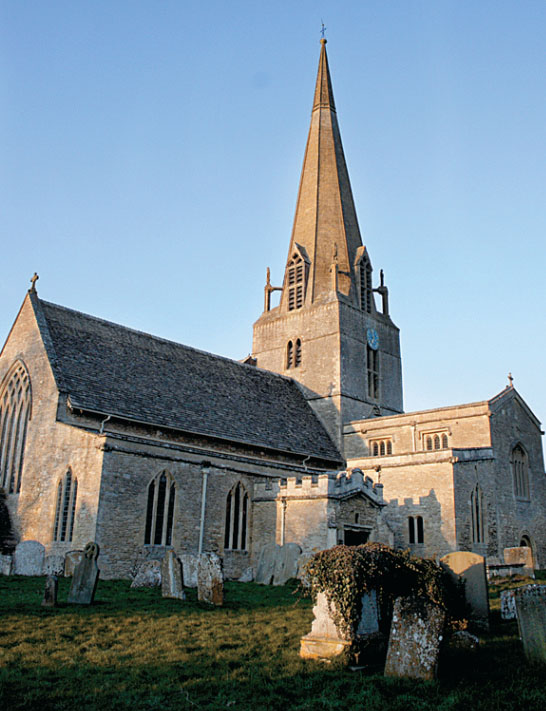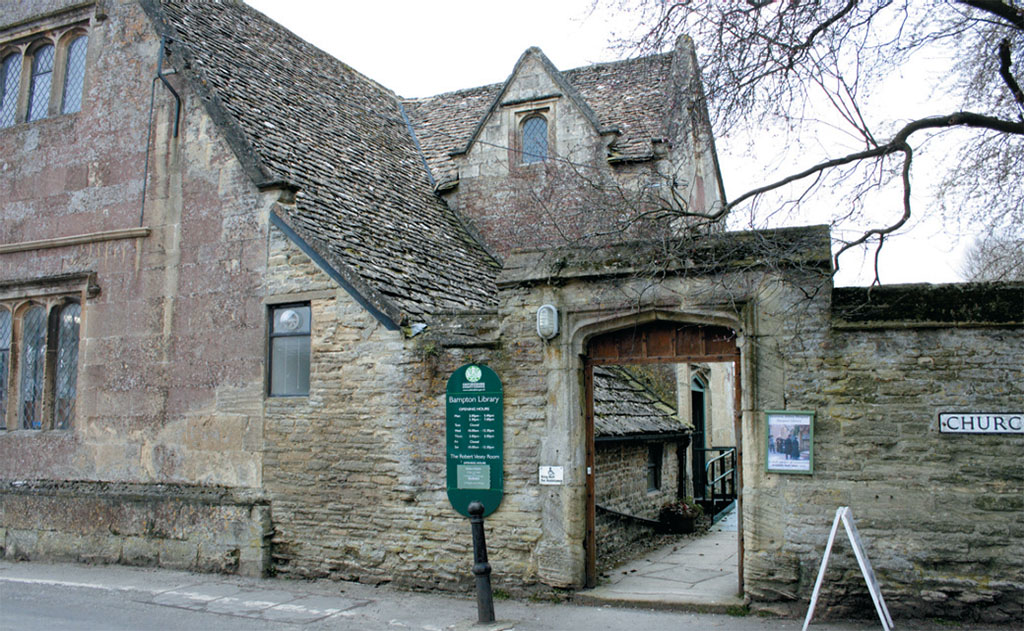
[caption id="MerrilyWeFrozeAlong_img1" align="aligncenter" width="223"]

DANA HUNTLEY
[caption id="MerrilyWeFrozeAlong_img2" align="aligncenter" width="1024"]

DANA HUNTLEY
IF ROBERT BROWNING HAD SEEN this April in England, he probably would not have bothered to have any “Home Thoughts from Abroad.”
Following last year’s wettest summer in a century, it was a cold winter in Britain, culminating in the coldest March since 1962. Late in the month, blizzards dropped 8 to 12 inches of snow across the high grounds from the Chilterns to the Cairngorms. The weather didn’t brighten and warm sufficiently to eliminate the snow cover for several weeks.
I landed at Heathrow the day after Easter for my spring editorial adventures. In the next fortnight I never saw the temperature reach 50. There are few Aprils I’ve not been in Britain over the last 30 years, and I never saw it quite like this. From daffodils to flowering hedges, the spring was a full month behind.
One consequence of the late snow and cold was both sad and frustrating. March and early April is lambing time. Upland farmers in Wales, the Peaks, Cumbria and elsewhere lost thousands of lambs, frozen in the snow. European Union directives demand that such dead animals not be buried on the land, but taken elsewhere for more, eh, sanitary disposal. Not surprisingly, that supra-national regulation has created yet another furor between Britain’s country people and the EU.
My first destination was the Oxfordshire village of Bampton, just a few miles south on Witney. Out the M4 to Junction 14, I drove through the chilly afternoon up the east side of the Cotswolds. Tiny Bampton is where the village scenes in Downton Abbey have been filmed; I was curious.
It’s all there: the cottage hospital, the parish church and Mrs. Crawley’s house. I took a room at The Romany Inn, at the end of Church View, the street where village exteriors were shot and various characters strolled on errands. Of course, that street scene looks very different without the cars, satellite dishes and contemporary signage. There was no one else at the inn that night, but Mike, the landlord, is expecting a busy summer.
The next morning I turned west to North-leach and took the principal route north through the heart of the Cotswolds, the A429. Along the route lie those painfully picturesque tourist towns that through the season are lined with coaches of sightseeing visitors: Bourton-on-the-Water, Stow-on-the-Wold and Moreton-in-Marsh. It’s easy to overlook that they are so popular because they are charming and photogenic, and filled with clever shops and antiques and beautiful settings for coffee or lunch.
It was market day in Moreton. Among the colorful stalls, the music of a street performer rang clear. A young Jamaican was playing the steel drum—a stirring rendition of “How Great Thou Art.” He grinned broadly for the camera.
The A429 led up to Stratford-upon-Avon, where I digressed to visit the Elizabethan manor of Charlecote Park. The story has it that Shakespeare as a youth was nicked for poaching deer in the park. The deer herd is still there, but now kept discretely behind fencing.
After a stay in Warwick and visits to Kenilworth Castle and Canons Ashby, I headed north. As a general rule, I avoid the motorways as much as possible. They are strictly for Point A to Point B, and if you’re driving 70 or anything slower, you do want to be in the slow lane. This was one of those occasions, though, and the M40, M5 and M6 had me in Cumbria in three hours (not generally in the slow lane).
I’d never routed from the Cumbrian peninsulas north up the back side of the Lake District; it had seemed a great drive on paper. The A595 from Ulverston north along the coast, however, is an A road purely by honorary designation. It took more three hours to traverse the 60 miles up to Whitehaven. Admittedly, I dawdled and took the photo ops. Scafell Pike (England’s tallest mountain at just over 3,000 feet) was bathed in snow, as were all the Lakeland peaks.
[caption id="MerrilyWeFrozeAlong_img3" align="aligncenter" width="546"]

DANA HUNTLEY
[caption id="MerrilyWeFrozeAlong_img4" align="aligncenter" width="809"]

DANA HUNTLEY
[caption id="MerrilyWeFrozeAlong_img5" align="aligncenter" width="624"]

DANA HUNTLEY
I settled for the night in the market town of Cockermouth at the Trout Hotel, next to the house where William Wordsworth and his sister Dorothy were born and spent their childhoods. Wordsworth, of course, became the ultimate Lake Poet, returning to the Lakes as a successful writer and personality. The next morning, heading south, I stopped in Grasmere where Wordsworth and his family are buried in St. Oswald’s churchyard. It’s just down the street from Dove Cottage, which he shared with his sister for many years.
Keswick, Bowness and Windermere teem with visitors in summer—and in a warm springtime. Yet even with that springtime nowhere to be found, there were visitors aplenty in the popular Lakeland centers. It was time to head east. From Kendall, I crossed the Pennines at Garsdale Head and into the Yorkshire Dales. Did I mention that it was cold? Four layers of clothes, two of heavy wool, were not enough to keep out the chill of temps in the 30s with a stiff and steady 15-20 mph wind off the North Sea. Snow blanketed in the craggy hills in every direction.
Wensleydale. Longest and most famous of the Yorkshire Dales, Wensleydale is not only a rich agricultural valley, but a scene of much history. Back in the 15th century, its lord and master was King Richard III. It was indeed Richard III that drew me on this trip. The ill-fated (but newly famous) king grew up here and had his power base at Middleham Castle, which gives its name to the village just south of Leyburn.
I put up at the White Swan Inn on Middleham’s cobbled square. From my room I could see the three pubs and village store on the square, and the remaining turrets and ramparts of the castle looming above. The clop-clop of horses on the cobbles woke me the next morning. Middleham Castle may have spawned the town, but that’s yesterday’s news for the folk who live and work here. Middleham’s more contemporary claim to fame is as the racing capital of the North. In the farms and paddocks that encircle the stone village, more than 500 racehorses are being raised and trained. Throughout the morning, in groups of three or four, horses were being ridden and led through the square to their exercise runs across the bare, surrounding hills.
A few miles south, I stopped to visit Jervaulx Abbey, one of Yorkshire’s great Cistercian monasteries. The manicured ruins are magnificent, and held in private hands. There’s an admission charge of £3, but no one will take your money. There’s an honesty box at the end of the walk. Then, it was on to Masham, home to two of Yorkshire’s great breweries (Theakston’s and Black Sheep), and Ripon, cathedral city of the Dales.
At Thirsk, I visited the Thirsk Museum, just across the street from James Herriot’s place, and then headed still east into the Yorkshire Wolds. I did make it to the North Sea coast at Scarborough and south to Bridlington. In truth, though, those seaside towns have little to recommend them and aren’t somewhere to hang out—even in warm weather.
At Malton, however, I paid a call at Eden Camp. A World War II POW camp for Italian and German prisoners, Eden Camp is largely intact. Described as a “modern history theme museum,” the camp today is a comprehensive presentation of the war both abroad and on the home front. The prison huts tell the narrative from “The Rise of Adolf Hitler” to the reunion celebrations of veterans years after the war. Throughout the site, artifacts from field artillery to Anderson shelters bring the conflict to life.
Going from warm car to blowing chill and back 30 times a day for a week does take its toll. By the time I got to York, I was in sorry shape, and happy to turn in the car after 900 miles. It was in the York Visitor’s Centre the next morning that I heard the news of Margaret Thatcher’s death. That is its own story, of course.Mine did continue with errands in York and a train to London. The travel adventures that I précis and share, as regular readers know, return again as features over the next several issues. Bronchitis notwithstanding, British travel is always rewarding, and I do always love to have British Heritage readers along!





Comments